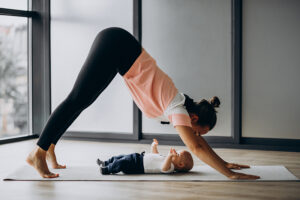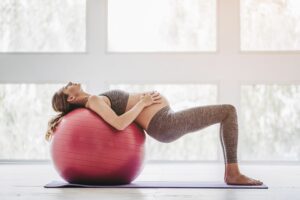Exploring Downward Dog: Essentials and Personal Insights
Understanding Downward Dog: A Blend of Tradition and Personal Experience
Let’s get real about the Downward Dog Pose, a foundational element of yoga that goes beyond mere physical stretching. It’s a pose that connects us with yoga’s ancient traditions while offering a platform for personal growth and well-being. Here’s a dive into what makes this pose a staple and how it resonates on a deeper level.
Breaking Down the Pose: A Step-by-Step Guide from My Practice
Walking through the Downward Dog, I want to share not just the steps but the nuances that can transform your experience:
1. Starting Position: Ground your hands and knees, feeling that initial contact with the earth. It’s a moment of grounding before the lift.
2. The Lift: As you elevate your hips, think about creating space in each vertebra. I find this mental image helps deepen the stretch and maintain alignment.
3. Engagement: Active engagement is key. Press through your palms and heels, feeling the stretch while maintaining a sense of active participation in the pose.
4. Alignment Checks: It’s not about perfection but alignment. Ensure your ears align with your arms and your back remains straight, creating a harmonious line of energy.
5. Holding and Breathing: In this pose, breathing is your rhythm. Hold and breathe deeply, letting the pose work its magic across your body and mind.
Personal Reflections: The Transformative Power of Downward Dog
From my journey, Downward Dog has been more than a pose; it’s been a teacher. It’s taught me patience, awareness, and the joy of being present. It’s these personal insights I hope to share, making your practice richer and more meaningful.
Tips for Daily Integration: Making Downward Dog Part of Your Life
Incorporating Downward Dog into your daily routine doesn’t have to be a chore. Whether it’s a morning energizer or an evening unwind, here are some tips to make this pose a regular, enjoyable part of your day.
Downward Dog is more than a series of movements. It’s a path to greater self-awareness, a tool for physical and mental balance, and a stepping stone in your yoga journey.
Deepening Your Downward Dog Experience
The Multifaceted Benefits of Downward Dog: Beyond Flexibility
While we often hear about the physical benefits, like improved flexibility and strength, Downward Dog offers much more. It’s a holistic exercise that impacts our circulation, mental clarity, and even our breathing patterns. Let’s unpack these benefits, sharing how each one contributes to a well-rounded yoga practice.
Navigating Challenges and Modifications: Making the Pose Work for You
It’s common to face hurdles while mastering Downward Dog. Maybe it’s wrist discomfort or difficulty in maintaining the pose. Here, I’ll share some practical solutions and modifications that have helped me and others make the most of this pose, ensuring it’s beneficial and accessible, regardless of your yoga level.
Personal Insights: The Pose’s Impact on Well-being
I’ve observed firsthand the calming effect Downward Dog can have on the mind, especially when integrated into a consistent practice. Whether it’s stress reduction or enhanced mental focus, this pose has been a cornerstone in maintaining my mental and emotional balance.
Incorporating Downward Dog into Various Practices
Downward Dog isn’t just for one type of yoga; it’s incredibly versatile. Whether you’re into Vinyasa, Hatha, or even restorative yoga, I’ll discuss how this pose can be adapted and integrated, enhancing your overall yoga experience.
Note: I want to highlight the personal growth journey that Downward Dog has facilitated for me. From building physical endurance to fostering mental resilience, this pose has been a key player in my yoga evolution, offering lessons and benefits that extend far beyond the mat.
Fitting Downward Dog Into Your Everyday Life
Routine Building with Downward Dog: Just Like Brushing Your Teeth
Think of Downward Dog as another daily routine, akin to brushing your teeth or making your bed. I’ll share how I sneak this pose into my daily hustle, sometimes even in pajamas, to ensure it’s as ingrained in my morning as my first cup of coffee.
Space No Bar: Downward Dog Anywhere You Fit
Got a tiny space? No problem. I’ve done Downward Dog in some pretty tight spots, and I’ll let you in on how to make it work, whether you’re in a hotel room, a park, or beside your desk during a quick break.
A Quick Mental Escape: Downward Dog’s Stress-Busting Magic
For me, Downward Dog isn’t just physical; it’s a mental escape hatch. When the day’s pace picks up too fast, a minute or two in the pose helps me center. I’ll share how you can use it as a quick stress relief tool, no matter where you are.
The Long Game: Sticking with Downward Dog
Persistence is key. The real perks of Downward Dog reveal themselves over time. I’ll talk about how regular practice has subtly but significantly impacted my flexibility, strength, and even my mental clarity.
Finally, I want to highlight that your journey with Downward Dog will be as unique as you are. This pose might just be a stepping stone to deeper self-awareness, greater calm, or a more active lifestyle. I’ll share a bit about how it’s shaped my yoga practice and life perspective, hoping it inspires you to find your own path.


